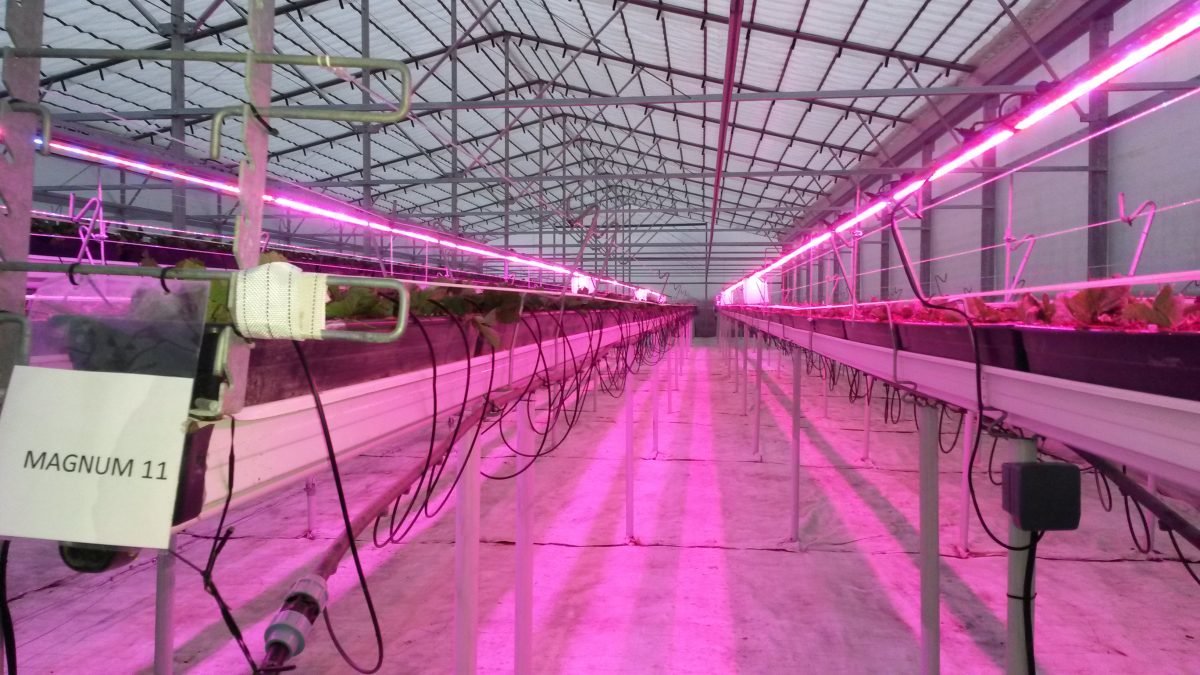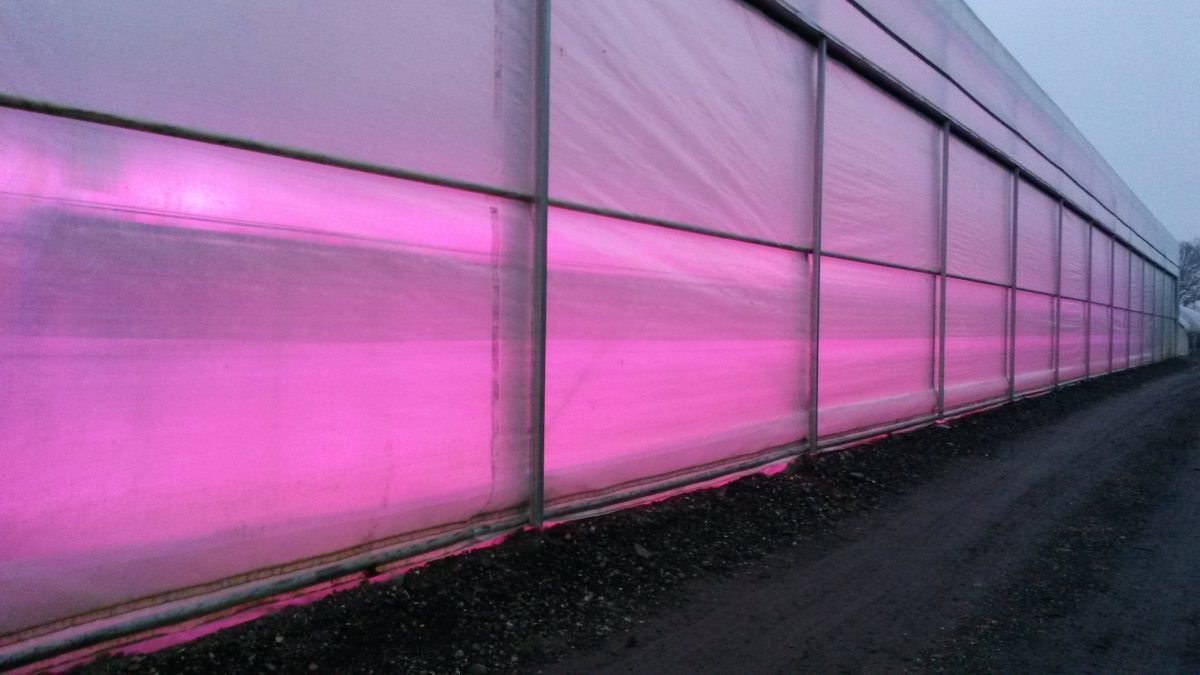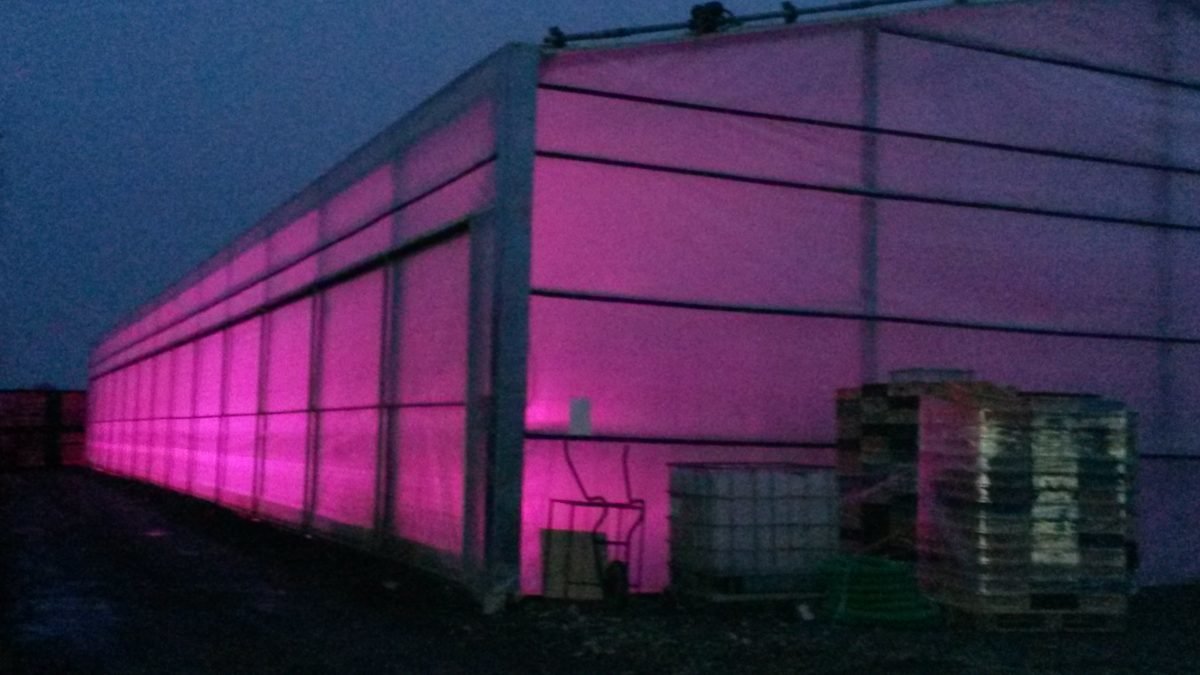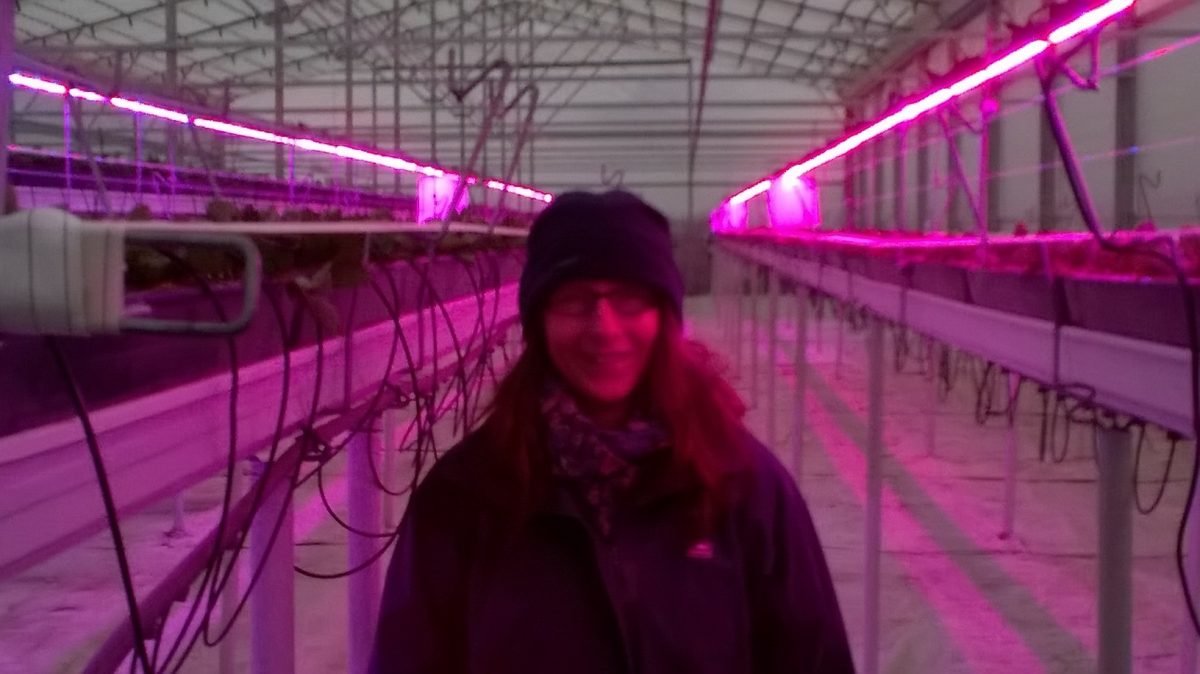This website uses cookies so that we can provide you with the best user experience possible. Cookie information is stored in your browser and performs functions such as recognising you when you return to our website and helping our team to understand which sections of the website you find most interesting and useful.
Think Pink for a brighter British strawberry future
Retractable rafter house innovation, combined with advances in LED technology, is enabling a June-bearing strawberry re-think; resulting in three crops a year.
Combining technological advances in horticultural production with rethinking an established working practice, is facilitating the growing of June-bearing short day strawberries as a triannual cropping system, as opposed to the standard single June harvest.
Sequential June-bearing short day planting is not an unknown practice for strawberry growers, but getting two plantings a year to successfully fruit can be a challenge with the British climate. Due to economics, many growers rely on everbearing, day neutral varieties, to provide a steady production of fruit from May to October, this has seen the traditional June-bearing varieties decline in popularity, despite their historically superior flavour.
The Total WorldFresh research team, located at the Berry Research and Development Site in Langley Kent, have begun trials utilising the combined technologies of a Cravo retractable rafter house and supplementary light-emitting diodes (LED) lighting to investigate the possibility of extending the harvest period of locally grown British June-bearing strawberries from April to December.
The flexibility of movement and control of the retractable rafter house maximizes internal climate conditions, whilst allowing any available external radiant heat to be utilised when conditions are favourable. Heat is retained by the retractable walls, stopping wind chill, whilst the roof can be independently opened allowing access to natural radiant heat, light and ventilation. In winter, temperatures within the rafter house can be 6oC higher than outside temperatures. The retractable roof and side walls also allow for greater humidity control and consequently lowered disease pressure. This flexibility, in combination with supplementary LED lighting to extend day length early and late in the year, could be the key to production extensions in a non-glasshouse system.
“I’ve been amazed at the temperature increases achieved within the house. The 7°c increase achieved so far this season is a really valuable tool. Coupled with the extra lighting, I’m excited to see the results” said Sarah Titmuss, Trials Officer for Total Worldfresh.
The LED’s are controlled by sensors that detect natural light. The retractable roof maximizes use of natural light, and the LED’s provide the light shortfall when conditions dictate. These LED’s enable plants to be given the amount of light needed for photosynthetic activity all year round rather than just in the summer months. Different strength and recipes of lighting are being trialled using combinations of Red, Blue and Far red spectrum LEDs.
This controlled environment also creates opportunities for the development towards further mechanisation. The irrigation is fully automated, the application of any overhead sprays is partially automated and the site is also investigating automated picking.
“We aim is to demonstrate to growers that there is good economic reason to grow high quality June-bearing varieties in this intensive but sustainable production system,” said Total Worldfresh Technical Director, Dr Drew Reynolds.




